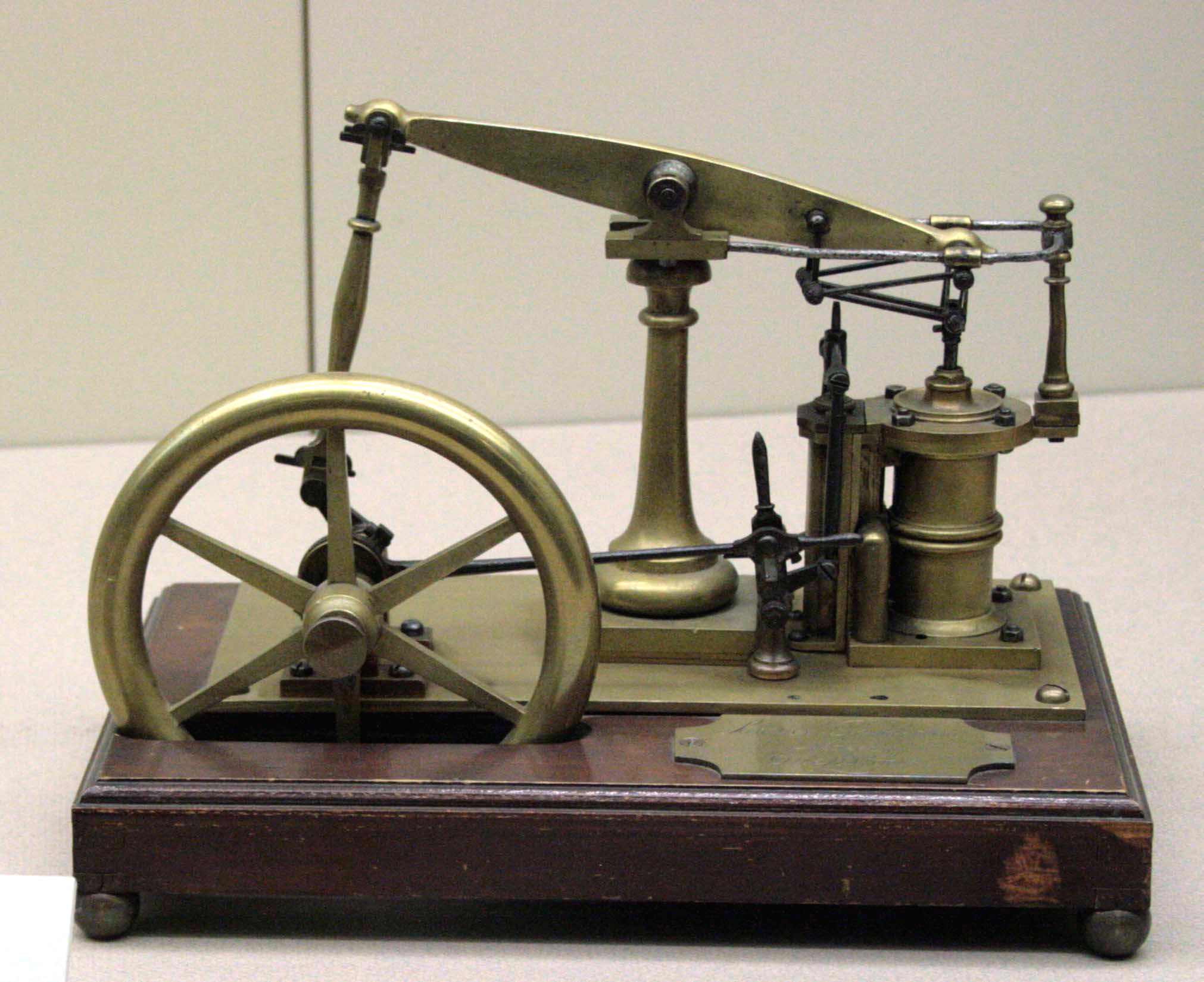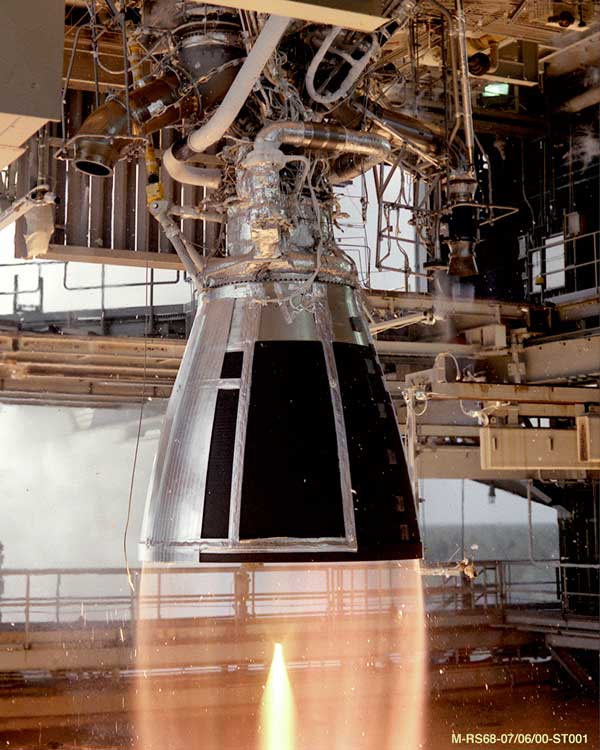|
Aeolipile
An aeolipile, aeolipyle, or eolipile, from the Greek "αιολουπυλη", also known as a Hero's engine, is a simple, bladeless radial steam turbine which spins when the central water container is heated. Torque is produced by steam jets exiting the turbine. The Greek-Egyptian mathematician and engineer Hero of Alexandria described the device in the 1st century CE, and many sources give him the credit for its invention. However, Vitruvius was the first to describe this appliance in his ''De architectura'' (ca. 30-20 BCE). The aeolipile is considered to be the first recorded steam engine or reaction steam turbine, but it is neither a practical source of power nor a direct predecessor of the type of steam engine invented during the Industrial Revolution. The name – derived from the Greek word Αἴολος and Latin word ''pila'' – translates to "the ball of Aeolus", Aeolus being the Greek god of the air and wind. Physics The aeolipile usually consists of a spherical or ... [...More Info...] [...Related Items...] OR: [Wikipedia] [Google] [Baidu] |
Hero Of Alexandria
Hero of Alexandria (; grc-gre, Ἥρων ὁ Ἀλεξανδρεύς, ''Heron ho Alexandreus'', also known as Heron of Alexandria ; 60 AD) was a Greek mathematician and engineer who was active in his native city of Alexandria, Roman Egypt. He is often considered the greatest experimenter of antiquity and his work is representative of the Hellenistic scientific tradition. Hero published a well-recognized description of a steam-powered device called an '' aeolipile'' (sometimes called a "Hero engine"). Among his most famous inventions was a windwheel, constituting the earliest instance of wind harnessing on land. He is said to have been a follower of the atomists. In his work ''Mechanics'', he described pantographs. Some of his ideas were derived from the works of Ctesibius. In mathematics he is mostly remembered for Heron's formula, a way to calculate the area of a triangle using only the lengths of its sides. Much of Hero's original writings and designs have been lost ... [...More Info...] [...Related Items...] OR: [Wikipedia] [Google] [Baidu] |
Steam Engine
A steam engine is a heat engine that performs mechanical work using steam as its working fluid. The steam engine uses the force produced by steam pressure to push a piston back and forth inside a cylinder. This pushing force can be transformed, by a connecting rod and crank, into rotational force for work. The term "steam engine" is generally applied only to reciprocating engines as just described, not to the steam turbine. Steam engines are external combustion engines, where the working fluid is separated from the combustion products. The ideal thermodynamic cycle used to analyze this process is called the Rankine cycle. In general usage, the term ''steam engine'' can refer to either complete steam plants (including boilers etc.), such as railway steam locomotives and portable engines, or may refer to the piston or turbine machinery alone, as in the beam engine and stationary steam engine. Although steam-driven devices were known as early as the aeo ... [...More Info...] [...Related Items...] OR: [Wikipedia] [Google] [Baidu] |
Vitruvius
Vitruvius (; c. 80–70 BC – after c. 15 BC) was a Roman architect and engineer during the 1st century BC, known for his multi-volume work entitled '' De architectura''. He originated the idea that all buildings should have three attributes: , , and ("strength", "utility", and "beauty"). These principles were later widely adopted in Roman architecture. His discussion of perfect proportion in architecture and the human body led to the famous Renaissance drawing of the '' Vitruvian Man'' by Leonardo da Vinci. Little is known about Vitruvius' life, but by his own descriptionDe Arch. Book 1, preface. section 2. he served as an artilleryman, the third class of arms in the Roman military offices. He probably served as a senior officer of artillery in charge of ''doctores ballistarum'' (artillery experts) and ''libratores'' who actually operated the machines. As an army engineer he specialized in the construction of ''ballista'' and '' scorpio'' artillery war machines for si ... [...More Info...] [...Related Items...] OR: [Wikipedia] [Google] [Baidu] |
De Architectura
(''On architecture'', published as ''Ten Books on Architecture'') is a treatise on architecture written by the Roman architect and military engineer Marcus Vitruvius Pollio and dedicated to his patron, the emperor Caesar Augustus, as a guide for building projects. As the only treatise on architecture to survive from antiquity, it has been regarded since the Renaissance as the first book on architectural theory, as well as a major source on the canon of classical architecture. It contains a variety of information on Greek and Roman buildings, as well as prescriptions for the planning and design of military camps, cities, and structures both large (aqueducts, buildings, baths, harbours) and small (machines, measuring devices, instruments). Since Vitruvius published before the development of cross vaulting, domes, concrete, and other innovations associated with Imperial Roman architecture, his ten books give no information on these hallmarks of Roman building design and technolog ... [...More Info...] [...Related Items...] OR: [Wikipedia] [Google] [Baidu] |
Rocket Engine
A rocket engine uses stored rocket propellants as the reaction mass for forming a high-speed propulsive Jet (fluid), jet of fluid, usually high-temperature gas. Rocket engines are reaction engines, producing thrust by ejecting mass rearward, in accordance with Newton's third law. Most rocket engines use the combustion of reactive chemicals to supply the necessary energy, but non-combusting forms such as cold gas thrusters and nuclear thermal rockets also exist. Vehicles propelled by rocket engines are commonly called rockets. Rocket vehicles carry their own oxidiser, unlike most combustion engines, so rocket engines can be used in a vacuum to propel spacecraft and ballistic missiles. Compared to other types of jet engine, rocket engines are the lightest and have the highest thrust, but are the least propellant-efficient (they have the lowest specific impulse). The ideal exhaust is hydrogen, the lightest of all elements, but chemical rockets produce a mix of heavier species, red ... [...More Info...] [...Related Items...] OR: [Wikipedia] [Google] [Baidu] |
Greeks In Egypt
The Egyptiotes, also known as Egyptian Greeks ( el, Αιγυπτιώτες), have existed from the Hellenistic period until the aftermath of the Egyptian revolution of 1952, when most were forced to leave. Antiquity Greeks have been present in Egypt since at least the 7th century BC. Herodotus visited ancient Egypt in the 5th century BC and claimed that the Greeks were one of the first groups of foreigners that ever lived there. Diodorus Siculus claimed that Rhodian Actis, one of the Heliadae, built the city of Heliopolis before the cataclysm; likewise the Athenians built Sais. Siculus reports that all the Greek cities were destroyed during the cataclysm, but the Egyptian cities including Heliopolis and Sais survived. First historical colonies According to Herodotus (ii. 154), King Psammetichus I (664–610 BC) established a garrison of foreign mercenaries at Daphnae, mostly Carians and Ionian Greeks. In 7th century BC, after the Greek Dark Ages from 1100–750 BC, th ... [...More Info...] [...Related Items...] OR: [Wikipedia] [Google] [Baidu] |
Couple (mechanics)
In mechanics, a couple is a system of forces with a resultant (a.k.a. net or sum) moment of force but no resultant force.''Dynamics, Theory and Applications'' by T.R. Kane and D.A. Levinson, 1985, pp. 90-99Free download/ref> A better term is force couple or pure moment. Its effect is to impart angular momentum but no linear momentum. In rigid body dynamics, force couples are ''free vectors'', meaning their effects on a body are independent of the point of application. The resultant moment of a couple is a ''special case'' of moment. A couple has the property that it is independent of reference point. Simple couple ;Definition A couple is a pair of forces, equal in magnitude, oppositely directed, and displaced by perpendicular distance or moment. The simplest kind of couple consists of two equal and opposite forces whose lines of action do not coincide. This is called a "simple couple".''Dynamics, Theory and Applications'' by T.R. Kane and D.A. Levinson, 1985, pp. 90-99Free ... [...More Info...] [...Related Items...] OR: [Wikipedia] [Google] [Baidu] |
Alexandria
Alexandria ( or ; ar, ٱلْإِسْكَنْدَرِيَّةُ ; grc-gre, Αλεξάνδρεια, Alexándria) is the second largest city in Egypt, and the largest city on the Mediterranean coast. Founded in by Alexander the Great, Alexandria grew rapidly and became a major centre of Hellenic civilisation, eventually replacing Memphis, in present-day Greater Cairo, as Egypt's capital. During the Hellenistic period, it was home to the Lighthouse of Alexandria, which ranked among the Seven Wonders of the Ancient World, as well as the storied Library of Alexandria. Today, the library is reincarnated in the disc-shaped, ultramodern Bibliotheca Alexandrina. Its 15th-century seafront Qaitbay Citadel is now a museum. Called the "Bride of the Mediterranean" by locals, Alexandria is a popular tourist destination and an important industrial centre due to its natural gas and oil pipelines from Suez. The city extends about along the northern coast of Egypt, and is the large ... [...More Info...] [...Related Items...] OR: [Wikipedia] [Google] [Baidu] |
.jpg)




